Advent is a season observed in most Christian denominations as a time of expectant waiting and preparation for both the celebration of the Nativity of Christ at Christmas and the return of Christ at the Second Coming. Advent is the beginning of the liturgical year in Western Christianity. The name was adopted from Latin adventus "coming; arrival", translating Greek parousia from the New Testament, originally referring to the Second Coming. [Wikipedia]
Bishop Perpetuus of Tours (461–490) established a fast before Christmas that began on November 11 (St. Martin’s Day), and the Council of Tours (567) mentioned an Advent season.
And then a brilliant person thought we could gamify the waiting and preparation and made an Advent Calendar.
The first and oldest printed Advent calendar was published in 1902, and it is actually not even a calendar, but it was a clock. With 12 numbers on it, and a pointer that you could move to countdown the 12 days of Christmas.
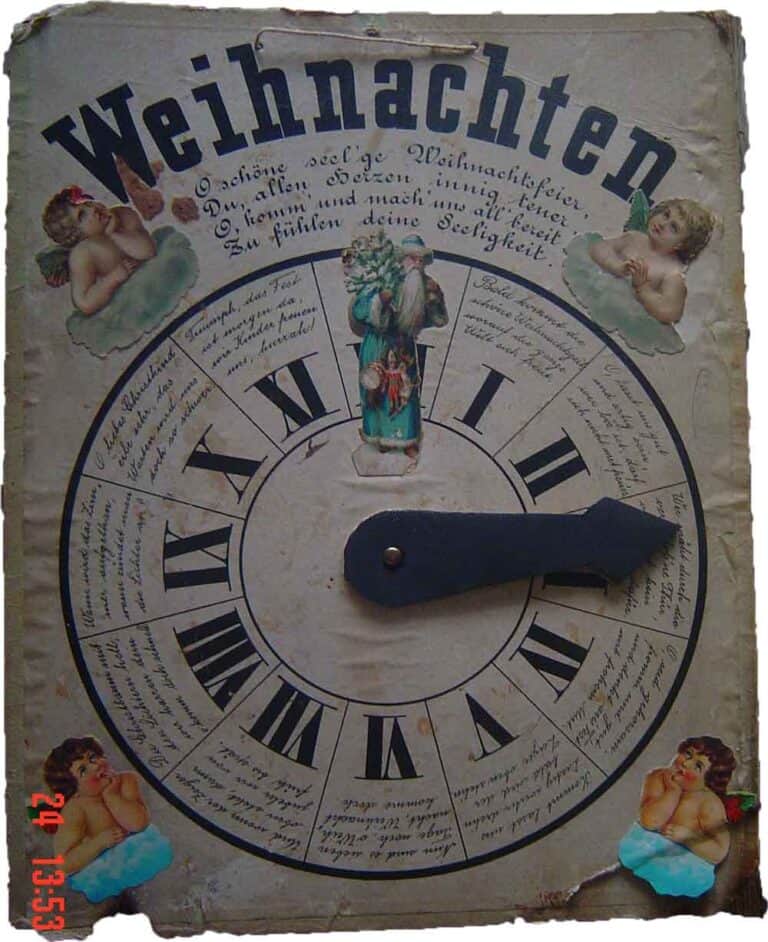
Gerhard Lang is widely considered the producer of the first printed Advent calendar in the early 1900s.
When Gerhard was a little boy, his mother gave him 24 cookies that were sewn onto the lid and put onto a piece of carton. He was allowed to eat one cookie every day and thereby counting the days until Christmas Eve.
In 1903 when Gerhard was in his early 20s, he remembered this homemade Advent calendar by his mother, and it probably inspired him to make the first printed Advent calendar. In 1904, the Christmas calendar “Im Lande des Christkinds” (In the land of the Christ child) appeared as an insert in the Stuttgarter Zeitung newspaper.
The calendar was mass-produced by the company called Reichhold & Lang, lithographic institute (in German: Lithographische Kunstanstalt) G.m.b.H, and it was called ”in the land of the Christ Child” (in German: Im Lande des Christkinds).
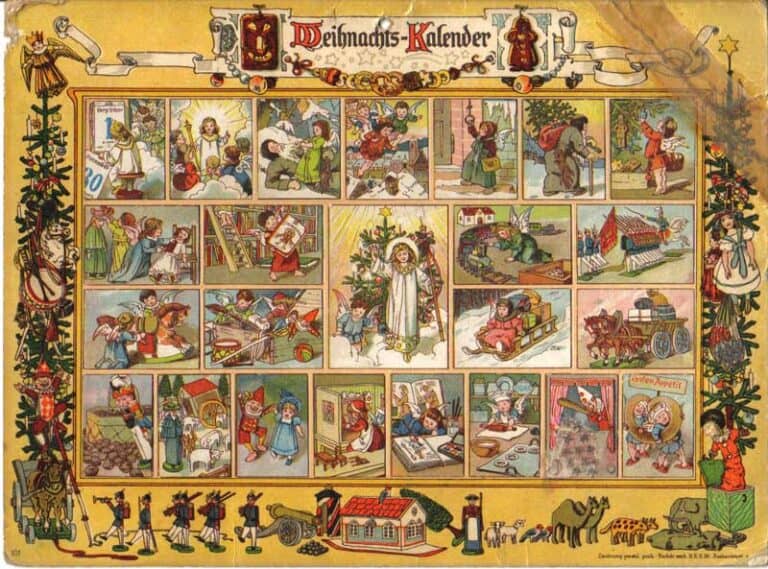
Around the year 1920, the same German company ”Reichhold & Lang” in Munich (German: München) came up with the idea to make Christmas calendars with small doors on them. The calendar was designed by the artist Dora Baum (1881-1949) and was given the name Christkindleins Haus (English: The house of the Christ child).
Gerhard Lang worked passionately on the development of new variations, including the Christ child’s house, which one could fill with chocolate; Advent calendars one had to break open in order to get the contents; and ones with doors to be opened, as well as Advent trees with angels to hang up and the little Advent houses. The Advent house was comprised of four colored pieces of cardboard, which could be put together to make a house. The cardboard houses had windows and doors, which had colored transparent paper covering each opening. Starting on the 1st of December, one window would be opened each night, and on the 24th, the front door would be opened. When you put a candle inside, it cast a bright holiday glow.
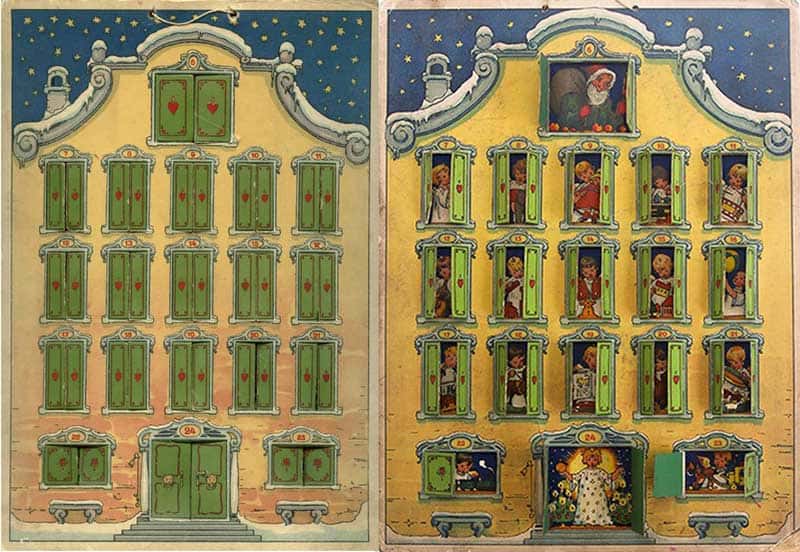
Around the year 1926, the first Advent calendar with chocolate came to the market in Germany. It was again the innovative company Reichhold & Lang who had come up with the idea to purchase 20 different pieces of chocolate from the company Stollwerck, and put them into their Advent calendar for Christmas called ”The Christmas Rose”.
During the 1930s the demand for the Advent calendars increased rapidly throughout Germany along with their economic boom, which has often been described as Germany’s economic miracle. As Germany was the first country in the west started to recover from the great depression.
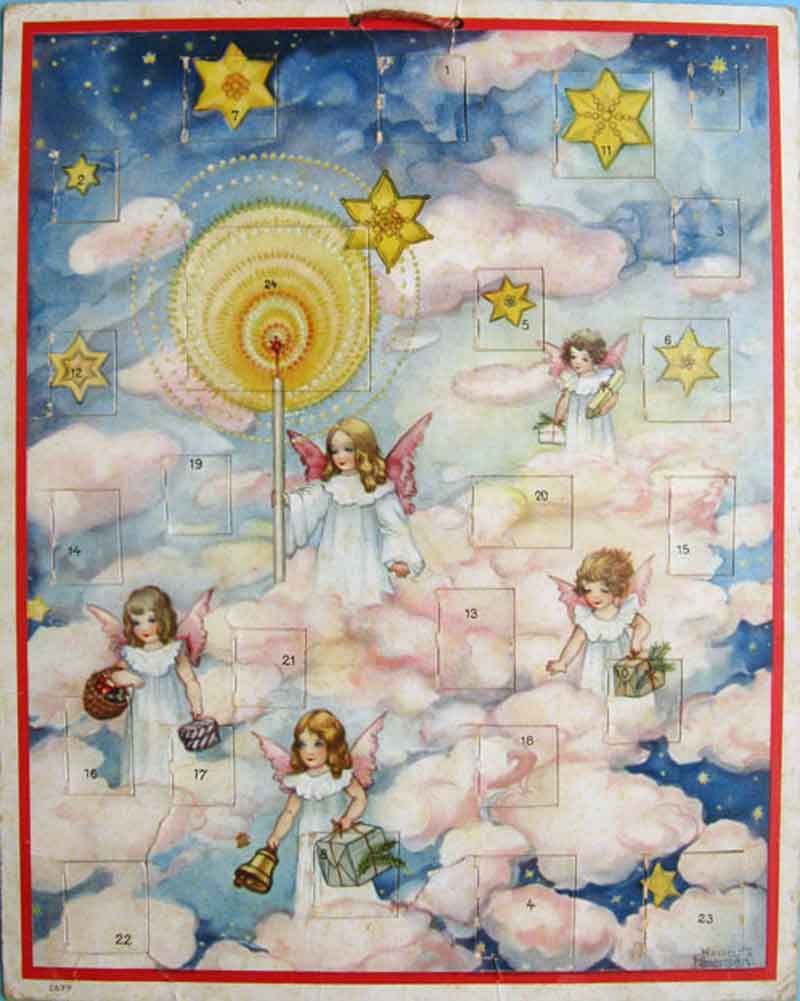
Production stopped again due to a cardboard shortage during World War II.
After WW II, German publisher Richard Sellmer revived the idea and focused his efforts on the US market. He partnered with President Dwight D. Eisenhower, setting up a charity with the president and his family. Eisenhower was photographed opening an Advent calendar with his grandchildren. The photo ran in several national newspapers and the Advent calendar was an immediate hit. Sellmer became known as the “General Secretary of Father Christmas.” His company still produces more than a million calendars a year in 25 countries.
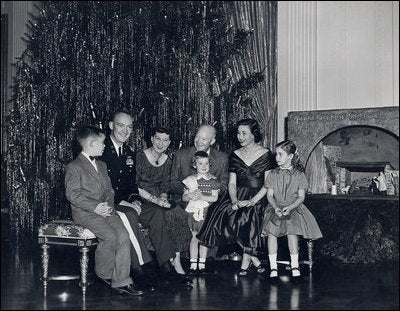
Advent calendars have taken on many shapes, sizes, and contents in recent years. But the main element of restraint, of deliverable waiting and anticipation of Christmas, has remained.
Sources:
- https://www.britannica.com/topic/Advent
- https://en.wikipedia.org/wiki/Advent
- https://www.my-adventcalendar.com/origin-history/
- https://www.weihnachtsmuseum.de/en
- https://www.german-way.com/history-and-culture/holidays-and-celebrations/christmas/advent/
- Big thank you to https://jolablot.com/history-of-the-advent-calendar/
- https://www.mccreascandies.com/blogs/blog/the-advent-calendar-an-origin-story-from-cards-to-caramels
- https://sellmer-adventskalender.com/en-ca/pages/history-of-the-advent-calendar

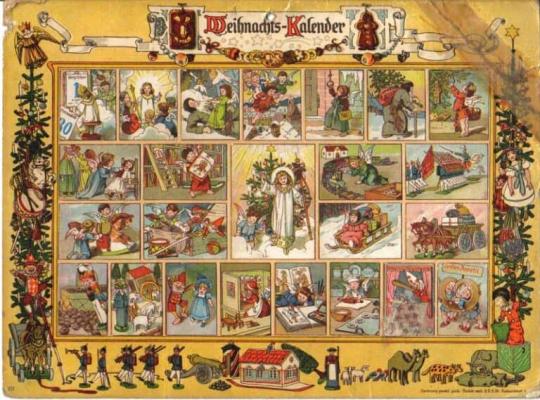
Add new comment